Comprehensive Guide to Dubai Tram Timing and Operations
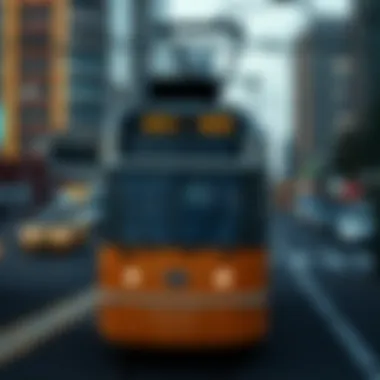

Intro
Dubai has emerged as a dazzling oasis of modernity in the deserts of the Middle East. As the city rapidly evolves, the tram system has stepped into the spotlight, playing a crucial role in enabling efficient transport amid the hustle and bustle. This guide will delve into the intricate workings of the tram system, exploring not just timetables but also its significance in the urban transport layout and economic implications for both residents and visitors.
With its sleek design and punctual operations, the Dubai Tram connects key hotspots such as the Dubai Marina and Jumeirah Beach Residence. But the tram's contribution goes beyond mere transportation; it symbolizes the city's ambition to become a global hub. Interests vary—from investors eyeing properties nearby to expatriates keen on settling in fast-developing areas. Understanding the tram system's operational rhythms is essential for anyone navigating life in this vibrant metropolis.
This article will offer a detailed look at:
- Daily tram schedules and peak hours
- Seasonal variations affecting travel
- The tram's alignment with Dubai’s ongoing urban development
- Economic ramifications for residents and potential investors alike
As we delve deeper, readers will gain valuable insights that go beyond typical transit schedules, shedding light on the broader implications of this system in Dubai’s economic tapestry.
Overview of the Dubai Tram System
The tram system in Dubai is not just a means of transport; it's a vital cog in the broader wheel of urban mobility in one of the fastest-growing cities in the world. Its presence significantly eases the flow of people through densely populated areas, especially around the glamorous developments of Dubai Marina and the iconic Jumeirah Beach Residence. Understanding this tram system is crucial for investors, homeowners, and anyone looking to navigate the city with ease.
Historical Context
When the Dubai Tram system was conceptualized in the early 2000s, it faced the daunting task of integrating into a city that was rapidly expanding. Opened in 2014, the tram was a response to the increasing need for efficient public transport options. Unlike many cities that took decades to develop rail systems, Dubai’s approach was quick and decisive. Years of planning were condensed into an impressive feat of engineering that not only beautified the landscape but also contributed to reducing traffic congestion.
As part of Dubai's commitment to becoming a global transit hub, the tram was positioned to complement other transport modes, like the Metro and buses, creating a seamless travel experience. This historical evolution showcases Dubai's foresight in addressing urban challenges and highlights its ambition to be at the forefront of public transportation innovation.
Current Layout and Design
The design of the tram network reflects the city’s modern aesthetic. With sleek, stylish trams gliding smoothly along their tracks, the current layout spans about 14 kilometers and includes 11 stations. Each tram station is equipped with facilities to cater to diverse passenger needs, including ticket vending machines and waiting areas with seating.
The layout is intentionally designed to take advantage of Dubai's unique urban layout, connecting various key hotspots such as shopping centers, beaches, and entertainment venues. Such strategic positioning ensures maximum accessibility, allowing residents and visitors alike to hop on and off seamlessly.
- Design Features:
- Eco-friendly technology: The system employs sustainable energy solutions.
- Accessibility: Stations and trams are built to be inclusive for those with mobility challenges.
In a city where luxury intertwines with everyday life, the tram system serves not only as transport but as a symbol of modern urban living.
Integration with Other Transport Modes
One of the standout features of the Dubai Tram system is its integration with other modes of transport, creating what some refer to as a ‘transportation mosaic.’ Linking effortlessly with the Metro, buses, and even water taxis, the tram offers travelers a comprehensive suite of options to choose from. This interconnectedness vastly improves the mobility of residents and tourists, allowing for easier transfers between various modes of transport.
"Public transport systems that work together reduce congestion and enhance overall urban mobility."
With a thoughtful placement of tram stations that align with Metro stops, passengers can enjoy smooth transitions without unnecessary delays. As a testament to this integration, people can purchase multi-modal tickets that work across different modes, making for a hassle-free journey through the bustling city.
Overall, the Dubai Tram system does not exist in isolation; it amplifies the existing transport framework, reinforces the city's commitment to public transit, and enriches the strategically planned urban landscape.
Operational Hours and Timings
Understanding the operational hours and timings of the Dubai Tram is crucial for anyone looking to navigate the city effectively. The ease of travel is not merely a convenience; it significantly impacts daily routines, whether for work, leisure, or errands. With a well-structured schedule that works largely in tandem with other modes of transport in the city, the tram system enhances urban mobility and ensures that residents and visitors can make the most of their time.
Key considerations about the tram's operational hours include:
- Consistency: Reliable timings promote dependable travel, making it easier for commuters to plan their day.
- Connection: The tram’s timetable is aligned with other transport modes, such as metro lines and buses, facilitating seamless transitions between different systems.
- Accessibility: Enhanced accessibility during peak hours allows for a more connected urban experience across key areas.
Weekday Timings
During the weekdays, the tram operates with a structured schedule to accommodate the bustling routine of Dubai's workforce. Generally, trams run from 6:00 AM to midnight. This timeline helps cater to early risers heading to work and late-night passengers making their way home. Moreover, the timetable is designed with a specific frequency:
- Morning Peak: The peak morning service sees trams running every 6-8 minutes from 6:00 AM until around 9:30 AM. This ensures high capacity during busy commute times.
- Midday Service: Between 10:00 AM and 4:00 PM, the frequency shifts to every 10-12 minutes, striking a balance for those traveling during less busy hours.
- Evening Peak: From 4:00 PM to 8:00 PM, trams increase their frequency back to every 6-8 minutes, accommodating the rush of workers finishing their day.
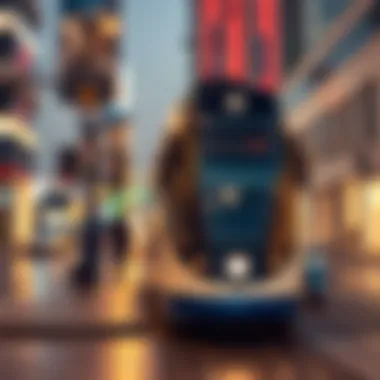
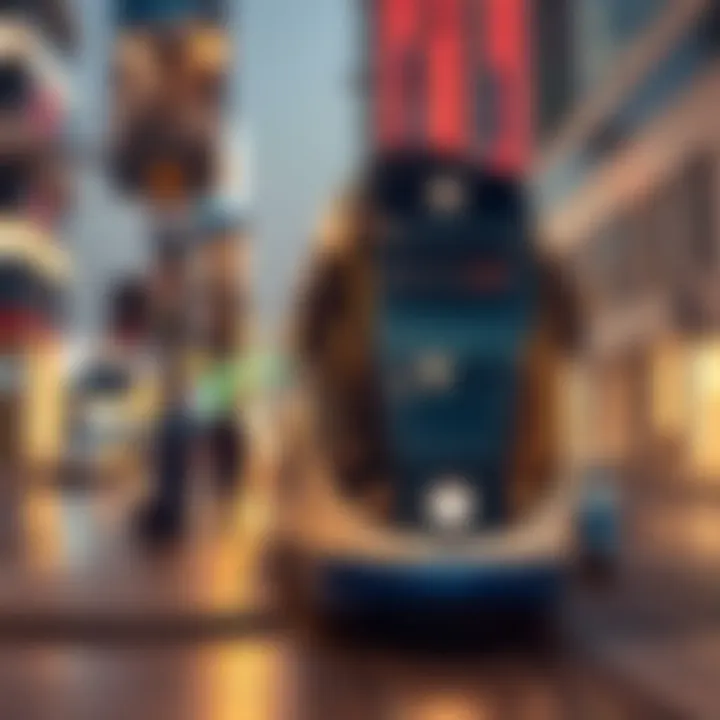
Weekend Timings
On weekends, the tram operates with extended hours, reflecting the change in passenger patterns as more people engage in leisure activities. The tram runs from 9:00 AM until 1:00 AM, providing ample time for late-night outings. Here’s how the weekend typically unfolds:
- Morning Start: By starting later in the morning, the tram aligns with the more relaxed weekend routine.
- Afternoon and Night: A similar frequency of about every 10-12 minutes maintains service without overwhelming capacity.
Weekends are often abundant with events and family activities, which the tram system accommodates, thus enhancing its role as a facilitator of city life.
Holiday Adjustments
Holidays in Dubai often bring increased travel conflicts as many people take to the streets to enjoy festivities and gatherings. Therefore, the tram system undergoes specific adjustments to cater to this influx. Generally, service times are similar to the weekend, running from 9:00 AM onward, yet with minor shifts:
- Public Holidays: Operating hours may extend, particularly during major holidays such as Eid or National Day; it's wise for commuters to check the latest information.
- Increased Frequency: During peak holiday traffic times, trams often run more regularly to accommodate elaborate festivities or events attracting larger crowds.
It is always prudent for riders to consult official transport websites or local announcements for real-time updates on holiday schedules.
As Dubai continues to grow and develop, understanding the operational hours and timings of the tram system will remain an essential tool for navigating this vibrant metropolis.
Peak vs. Off-peak Hours
The concept of peak and off-peak hours is central to maximizing one’s experience while utilizing the Dubai Tram system. Understanding these hours not only enhances travel efficiency but also helps in better planning, particularly for those who rely on the tram for daily commutes or occasional journeys across the city. When considering the diverse demographic of tram users—from families exploring the city to professionals rushing to work—this knowledge enables a more seamless interaction with one of Dubai's crucial public transportation services.
Identifying Peak Times
In the bustling heart of Dubai, distinguishing peak times is essential for avoiding congestion on the trams. Peak hours typically align with the conventional workday; mornings from 7:00 AM to 9:30 AM and evenings from 4:30 PM to 7:00 PM are particularly crowded. During these periods, the trams are often packed to the rafters, especially at major stops like Jumeirah Beach Residence and Dubai Marina. The influx of commuters is a river that flows both ways, with people heading to work in the morning and then returning home later in the day.
An indicative pattern emerges; subway stations close to commercial hubs or large residential areas attract larger crowds during these peak times. For those keen on escaping the throngs, being aware of these recognized peaks can make all the difference.
Strategies for Avoiding Crowds
To navigate the tram system like a pro, employ several strategies designed to dodge the busy hours. Here are a few tips:
- Travel Off-Peak: Aim for mid-morning or later in the evening. If your schedule allows, catching a tram between 10 AM – 3 PM can mean far less jostling and more leisurely rides.
- Use the Tram Apps: Handy applications like "RTA Dubai" can provide real-time updates on tram timings and crowd levels, helping you plan your journey better.
- Alternative Routes: Familiarize yourself with routes that might not be direct but can provide a more scenic or less crowded experience. Consider tram lines adjacent to popular events or attractions.
- Bicycle or Walk: If feasible, combine tram usage with cycling or walking. Sometimes, covering the last mile to your destination on foot or by bike can not only avoid the crowds but can be a refreshing change of pace.
By following these strategies, riders can harness both the efficiency and convenience of the Dubai Tram, making the most of their travels across this vibrant city.
"Navigating the tram during off-peak hours is like having a backstage pass—it opens up a whole new world of convenience."
Taking these insights into account can empower users with the knowledge to plan their travels more effectively, enriching their experience while maintaining the practicality that the tram system offers.
User Guidance for Efficient Travel
Navigating a bustling city like Dubai can be a bit like trying to find your way through a maze; everything looks similar and the hustle never stops. That’s where understanding how to effectively use the tram system can make a world of difference. This section focuses on practical advice to streamline your travels and improve your commuting experience. Whether you're looking to avoid rush hour or need tips on real-time tracking, having a solid strategy can save you both time and stress, enhancing your overall trip.
How to Check Live Timings
Staying up-to-date with the tram schedules ensures that you can plan your day without unnecessary delays. To make this process easier, several resources are available for checking live timings.
- Dubai Tram Website: The official Dubai Tram website provides the most accurate and real-time updates. Simply visit the website and navigate to the 'Live Timings' section.
- Mobile Apps: Download the RTA Dubai app. It’s user-friendly and provides real-time information on tram arrivals, allowing you to time your journey perfectly.
- Smart Displays at Stations: Once you arrive at a tram station, you’ll find digital boards that display live timings for incoming trams. Keep an eye on these screens for the latest updates.
By utilizing these resources, you can reduce waiting times significantly and ensure a smoother ride. As they say, time waits for no one—and that especially holds true in a fast-paced city like Dubai.
Mobile Applications and Resources
Technology has made commuting more convenient than ever. Mobile applications are invaluable for keeping you in the loop regarding tram timings and system updates. Here are some key resources to consider:
- RTA Dubai App: This is the go-to application for anyone who uses public transport in the city. It provides information on all the available modes of transport, including live tram schedules, route planning, and ticket purchasing options. All in one place, making it a lifesaver for travelers.
- Google Maps: While primarily a navigation tool, Google Maps also includes public transport details. Just input your destination and choose the tram icon. It will show you the best routes, including tram timings, which is helpful to blend convenience with exploration.
- Local Forums and Social Media Groups: Engaging in communities on platforms like Reddit can provide you with tips and shared experiences from users who rely on the tram system. You might stumble upon insights that apps miss!
"Location is everything. Choose wisely to enjoy seamless connectivity in a city that never sleeps."
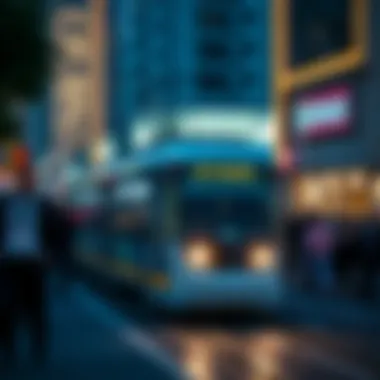

Embracing these tools allows you to have high-level control over your travel, leaving little room for surprises. In a city as dynamic as Dubai, efficient travel guidance becomes an indispensable asset, aiding both day-to-day commuters and newcomers looking to explore the vibrant landscape.
Impact of Tram Timing on Real Estate
The impact of tram timing on real estate in Dubai cannot be understated. A reliable and punctual tram service increases the attractiveness of properties nearby, influencing both accessibility and desirability. When people consider buying or renting a home, they often prioritize transportation options. The convenience of easy access to the tram system can tip the scales in favor of a property, affecting its market value significantly.
Accessibility and Property Value
Accessibility is a major factor in property valuation. Living near a tram stop means residents can commute effortlessly, making daily travel stress-free. This is particularly crucial for expatriates and those working in bustling areas like Dubai Marina or Downtown Dubai. For instance, properties close to the tram system offer a competitive edge, as they allow for easy connections to other vital transport modes such as the Metro and buses.
When tram timings are consistent and well-publicized, potential buyers can gauge their daily commute with certainty. The perception of being 'just a tram ride away' from major hubs can add a premium to property prices. In turn, this boosts the interest from investors and homebuyers alike, often translating to higher rental yields.
It's also worth noting how the property landscape shifts as tram lines expand. Areas that were once considered remote can become prime real estate, thanks to the ease of access provided by the tram system. Potential investors need to keep a keen eye on upcoming tram routes, as these can signal emerging neighborhoods keen for development.
Tram Proximity and Neighborhood Development
The proximity of tram stations to residential areas prompts various neighborhood developments. Planners and developers are increasingly aware of the importance of transportation links in attracting residents and businesses. A neighborhood close to tram stops is often perceived as livelier and more vibrant, attracting cafes, shops, and other amenities.
Moreover, as communities grow around these transport hubs, the availability of services often enhances quality of life. New parks, schools, and shopping centers might emerge, further increasing the appeal of the area. Homebuyers and investors are naturally drawn to these flourishing neighborhoods, knowing they offer a tight-knit community feel while remaining connected to bustling urban life.
While evaluating real estate investment opportunities, consider how close a property is to tram stations. It’s not just about the value today; it’s about future appreciation fueled by continued investment in public transport.
"Proximity to tram services can be a game changer for investors, adding tangible value to properties in areas once deemed less desirable."
As Dubai forges ahead into the future, expect tram timing and transportation access to play a pivotal role in shaping the real estate landscape, providing both challenges and opportunities for savvy investors, agents, and homebuyers. For more insights on how public transport can influence your property decisions, visit reputable sources like Wikipedia or check out community forums on Reddit.
Investing in properties with easy tram access might just be the key to unlocking potential growth in the bustling metropolis of Dubai.
Comparative Analysis with Other Transportation
When evaluating the landscape of public transportation in Dubai, it's essential to compare the tram system with other prevalent transit modes, specifically the metro and bus services. This comparison not only sheds light on the unique advantages of the tram system but also highlights considerations that investors, homebuyers, agents, and developers need to navigate in their decision-making processes.
Tram vs. Metro
The tram and metro systems in Dubai serve different yet complementary purposes within the transport network. Here’s how they stack up against each other:
- Coverage Areas: The metro generally covers a broader area, connecting major districts and suburbs, while the tram primarily operates within particular urban zones, such as Dubai Marina and Jumeirah Beach Residence. Hence, if one needs quick access across a wide area, the metro is the way to go.
- Frequency: Trams run frequently but on a more localized route compared to the metro, which can handle a higher volume of passengers traveling longer distances. The metro can transport thousands of passengers with its longer trains, making it more efficient for bulk movement during peak hours.
- Speed and Efficiency: In terms of speed, the metro outperforms the tram as it travels faster along its elevated tracks. However, trams are quite efficient for short-distance travel, especially in densely populated neighborhoods where hopping on and off is common.
- Passenger Experience: Both systems offer a quality ride, though trams can feel more scenic as they pass through streets lined with shops and residential buildings. In contrast, the metro provides an underground or elevated view, often missing out on the intricacies of street-level life.
Key Takeaway: While the metro is ideal for longer travels across the city, the tram's charm lies in its accessibility and connection to local attractions. Understanding these differences can inform important decisions, especially for property investments near transport hubs.
Tram vs. Bus Services
Now, let’s turn our focus to how trams fare against bus services:
- Capacity and Comfort: Trams generally accommodate more passengers than buses, which can be vital for commuters during rush hours. Trams offer a more spacious environment and smooth ride, which can contribute to a better overall experience.
- Consistency and Reliability: Buses sometimes face delays caused by traffic congestion, whereas trams operate on dedicated lines, making them more reliable in terms of timing. This reliability can subtly boost the attractiveness of properties close to tram lines, as potential homebuyers appreciate consistent transit options.
- Environmental Impact: Trams are typically more eco-friendly compared to buses, as they run on electricity rather than relying on fossil fuels, reducing emissions considerably. Therefore, living near tram lines might appeal more to environmentally-conscious buyers.
- Cost Factor: While buses often have lower fares, their inefficiency during peak hours can lead one to reconsider the overall cost-effectiveness of choosing bus transit over tramways. For daily commuters, trams offer a clearer advantage in terms of time saved.
Choosing between these forms of transport hinges on one’s individual needs and lifestyle. For short distances and local attractions, trams offer convenience and aesthetics. However, for broader access across Dubai, the metro and buses provide essential services that complement the tram system. Recognizing the nuances of these interactions can lead to smarter choices in terms of property investments and urban planning.
Economic Implications of Tram Timing
The timing of tram operations within Dubai plays a crucial role in shaping the economic landscape of the city. By providing reliable and efficient public transportation, the tram system not only facilitates the daily commutes of thousands but also has a profound impact on the overall business environment. Understanding the economic implications of tram timing becomes essential for investors, homebuyers, agents, developers, and expatriates looking to navigate this bustling urban hub effectively.
Cost Efficiency for Daily Commuters
Cost efficiency in public transport is often a key determiner of its success. The Dubai Tram caters to a diverse demographic, with daily commuters, tourists, and casual riders alike often relying on it for cost-effective travel.
- Affordability: Tram fares in Dubai are designed to be economical. Compared to driving or using taxis, the tram provides a budget-friendly alternative. For example, a single journey ticket costs just a fraction of what one might spend on petrol or parking fees. This accessibility resonates well with everyday travelers and contributes to a lower cost of living.
- Predictable Scheduling: The efficient scheduling of trams minimizes waiting times, making it easier for commuters to plan their day. This can lead to reduced time away from work and increase productivity. People can arrive at employee or business meetings punctually, which is vital in the fast-paced city life of Dubai.
- Flexible Options: Daily commuters have the option to combine tram travel with other modes of public transport, like buses and the metro. This multimodal approach not only saves money but also allows flexibility in travel plans, making it easier to reach their final destinations without breaking the bank.
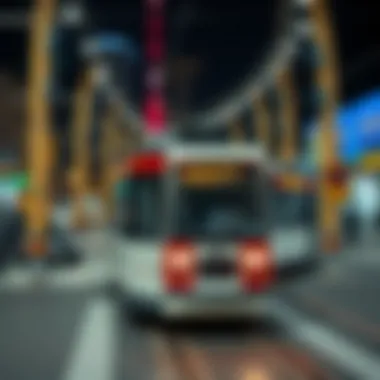
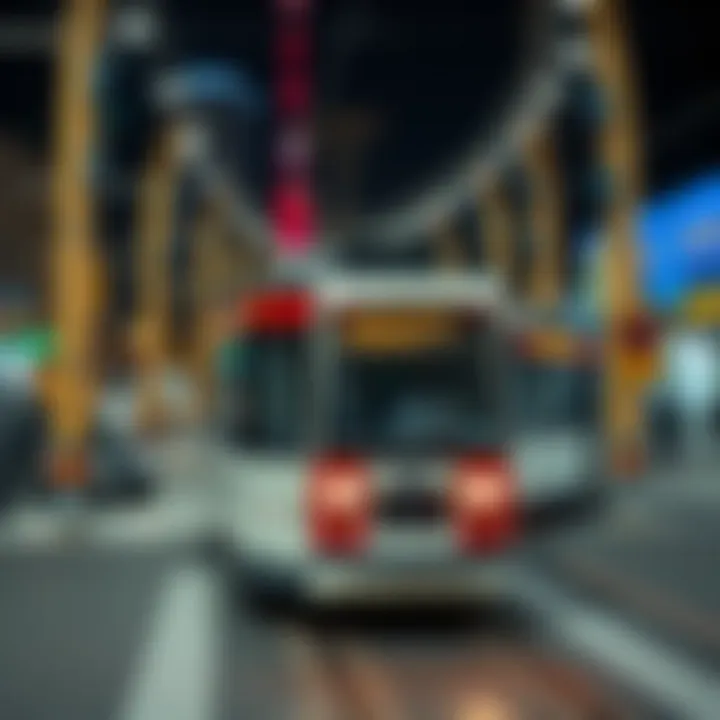
"A reliable tram schedule can be the difference between a stressful day and a productive one for a commuter in Dubai."
Taking into account these factors, it's easy to see why understanding tram timings is not just a matter of scheduling, but a significant factor in economic decision-making and personal finance.
Boosting Local Businesses Through Transit Access
The interplay between tram timing and local businesses is critical in any urban setting, and Dubai is no exception. The tram lines have become a catalyst for economic activity in the areas they serve. Here’s how tram access can enhance local business prospects:
- Increased Foot Traffic: An efficient tram system draws people into neighborhoods; businesses situated near tram stops benefit from increased visibility and foot traffic. Whether it’s local cafes, retail shops, or service providers, the presence of the tram encourages spontaneous visits and impulse purchases.
- Convenient Access for Customers: Dining and shopping establishments rely on a flow of customers who value convenience. The tram’s timely service ensures that potential clientele can easily access desired locations without hassle. A little convenience can go a long way in driving sales and customer loyalty.
- Promotion of Mixed-Use Developments: Real estate developers often focus on building mixed-use communities around tram stations. This trend leads to urban areas rich in amenities and services, appealing to a broader demographic and driving economic growth. The blending of residential and commercial spaces encourages vibrant neighborhood life.
Lastly, the synergy between local businesses and tram access is reciprocal. As businesses thrive, they contribute to job creation and an enriched local economy, amplifying the benefit of well-timed tram schedules.
In essence, the economic implications of tram timing extend well beyond personal commuting records; they shape the infrastructural backbone of the city and support a thriving local economy in the heart of Dubai.
Future Developments and Innovations
The future of the Dubai Tram system stands at a pivotal crossroad where advancements in technology and urban planning converge. As Dubai aims to enhance its public transport network, focusing on future developments and innovations becomes essential. This section delves into emerging extensions and technological enhancements that promise to redefine the operational landscape, aligning with the city's vision for a sustainable urban environment.
Upcoming Extensions and Routes
In recent discussions, upcoming extensions and routes have been a hot topic among transport planners and urban developers alike. The Dubai tram system is set to expand, potentially reaching more neighborhoods and connecting with key developments. Localities like Dubai Marina, Jumeirah Beach Residence, and beyond could soon see tram lines winding their way through their streets. This expansion aims not just at improving accessibility, but also at easing congestion on already stretched road networks.
One specific proposed route extends to the Expo 2020 site, which is of high interest for both local businesses and tourists. Integration with multi-modal transport systems, such as metro and bus services, will also be streamlined. This interconnectedness is not a mere detail; it's a game changer for anyone aiming to navigate the bustling city with ease. Imagine catching a tram that seamlessly connects to the metro, cutting travel time significantly. That's not just efficient—it's transformative.
Why should investors and homebuyers care about these extensions? Increased accessibility often correlates with soaring property values. As person-to-person transit becomes more fluid, areas that were once hard to reach might see a spike in popularity. Engaging with these developments could mean tapping into lucrative investment opportunities.
Technological Enhancements in Operations
On the tech front, technological enhancements in operations are on the horizon, promising both efficiency and reliability. The tram system in Dubai is adopting smart technologies to revolutionize how operations are managed. For instance, real-time tracking applications are being developed to provide passengers with updates on tram timings and delays right on their smartphones. This results in better planning for daily commutes, effectively allowing riders to optimize their travel schedules.
Moreover, the incorporation of artificial intelligence in operational management could mean predictive maintenance for the tram fleet. This means tram breakdowns could be significantly reduced, improving overall service reliability. Additionally, systems employing big data analytics will help in optimizing routes based on ridership patterns, ensuring that trams operate where they are needed most.
One critical aspect to consider is sustainability. The tram system aims to incorporate green technologies, from energy-efficient tram vehicles to solar-powered stations. Embracing these technologies not only aligns with global sustainability trends but also appeals to a more eco-conscious clientele.
"Innovation must become central to the transport sector, blending seamlessly with growth in urban development for a prosperous future."
Environmental Considerations
In the context of urban transport, environmental considerations play a crucial role in shaping how cities develop and function. With the Dubai Tram system being a significant player in the overall transportation framework of the city, understanding its environmental impact and sustainability practices becomes paramount. This section delves into the importance of sustainable public transport systems and how they can positively influence not only the daily commutes of residents but also the health and well-being of the urban environment.
Sustainability of Tram Systems
Sustainability in tram systems involves several elements that aim to minimize ecological footprint while ensuring that transportation needs are met efficiently. The construction and operation of the Dubai Tram integrates green building practices and focuses on energy-efficient technologies. For instance, the trams are designed to operate on electricity, which is a cleaner alternative compared to traditional fossil fuels. This shift towards electric propulsion helps in reducing air pollution, contributing to a healthier atmosphere in the bustling city.
Moreover, the tram network is planned to synchronize with existing urban landscapes, promoting the preservation of green spaces. It also encourages the use of trams over cars, effectively reducing traffic congestion and the emissions associated with it. The inclusion of features like solar panels on tram stations further highlights the commitment to sustainability, harnessing renewable energy for station operations, thus lessening reliance on conventional energy sources.
In summary, the sustainability of the tram system in Dubai focuses on:
- Operating on electric power to reduce air pollutants.
- Integrating green technologies in station construction.
- Preserving urban green spaces through careful planning.
- Encouraging public transport usage over personal vehicles.
Reducing Carbon Footprint Through Public Transport Usage
Public transport, particularly a well-integrated tram system, serves as a backbone for reducing the overall carbon footprint of a city like Dubai. When residents opt for trams instead of private vehicles, the collective decrease in emissions becomes noticeable. Public transport systems not only aim to provide an affordable transport alternative but also significantly cut down on the amount of greenhouse gases released into the atmosphere.
The Dubai Tram, by offering frequent and accessible services, promotes ridership over car usage. Strategies designed to educate the public about their environmental impacts can bolster this transition. For instance:
- Educational campaigns on the benefits of tram usage, including potential cost savings and reduced environmental impact.
- Incentives for regular tram users, such as discounts on multi-ride tickets, can encourage more residents to ditch their cars.
- Collaborative events with local businesses and environmental organizations to promote tram usage on Earth Day or similar occasions.
Leveraging the tram for urban mobility not only enhances public awareness regarding environmental stewardship but also underscores the role of communities in mitigating climate change. According to several studies, a significant percentage of people prefer trams if they feel they contribute to cleaner air and a healthier urban environment.
"Sustainable transport options like the Dubai Tram are vital in balancing urban growth with our responsibility to preserve the environment for future generations."
As cities like Dubai continue to grow, the tram system presents a viable solution for future transportation needs while addressing the pressing need for sustainable practices. Through continuous investments in infrastructure and public awareness, these systems can be pivotal in steering communities towards a more environmentally-conscious future.
For more insight into sustainable public transport practices, you can visit National Geographic and explore ongoing discussions about urban transit systems on Reddit.



